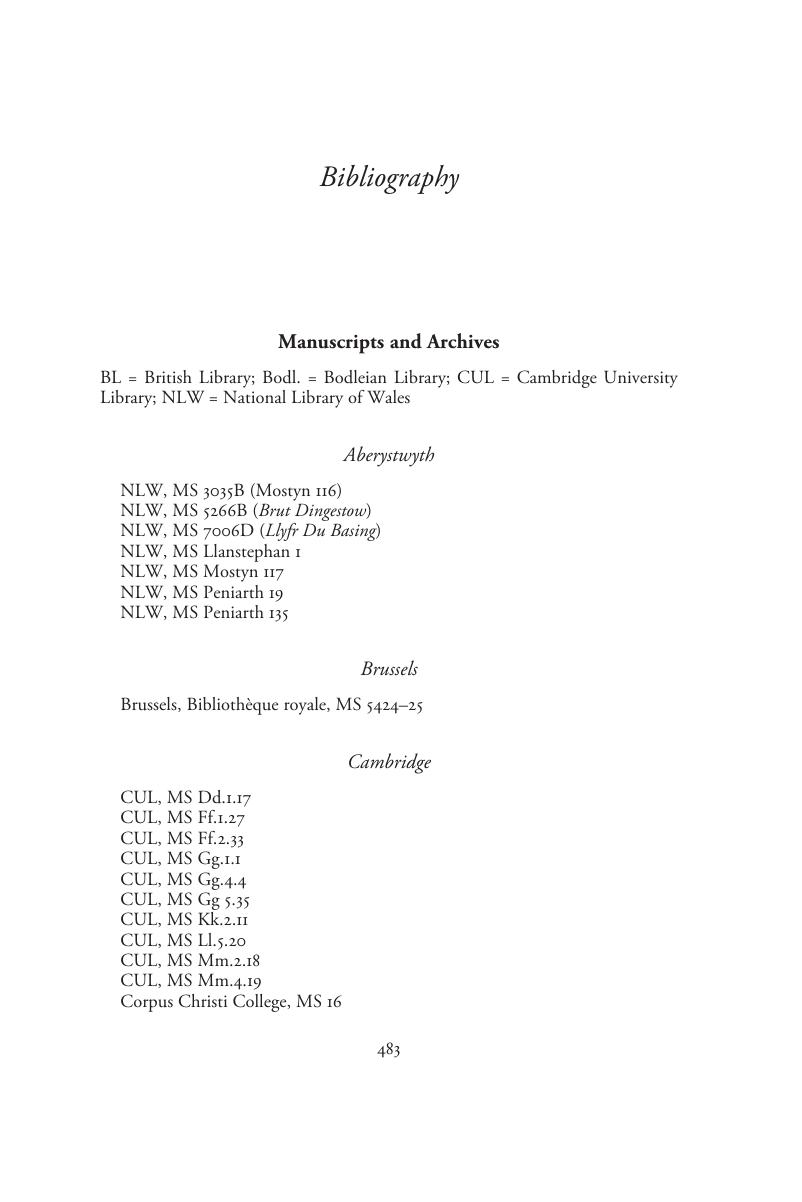Bibliography
Published online by Cambridge University Press: 19 December 2019
Summary

- Type
- Chapter
- Information
- Medieval Historical WritingBritain and Ireland, 500–1500, pp. 483 - 562Publisher: Cambridge University PressPrint publication year: 2019

